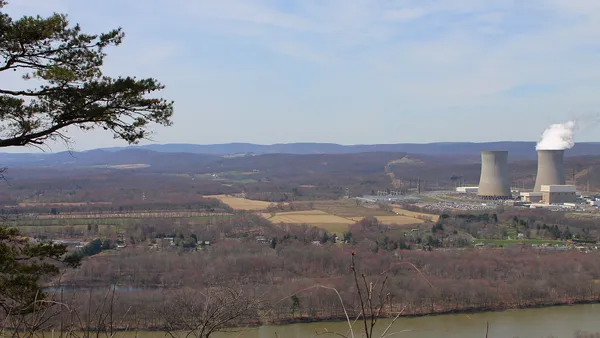Dive Brief:
- The head of the New York Public Service Commission is defending the state's decision to financially support struggling nuclear plants through Zero Energy Credits (ZECs) utilities will be required to purchase.
- Five lawmakers in a letter to PSC Chair Audrey Zibelman have said they oppose a statewide rate increase that requires downstate electric customers to pay for most of the subsidies supporting upstate generation.
- Zibelman replied last week, telling the group there are "fundamental errors in your understanding of how our power system works."
Dive Insight:
New York's plan to support its struggling nuclear fleet may face challenges, but Zibelman has bluntly replied to an initial attack saying the plan has been "carefully designed" to not run afoul of the Federal Energy Regulatory Commission's jurisdiction.
"At the outset, it is critical to address a number of fundamental errors in your understanding of how our power system works, the design of the Clean Energy Standard (CES) and the efforts that Governor Andrew M. Cuomo has made and is making to manage the price impacts of securing our environmental future," Zibelman wrote.
There are two types of payments being made under the CES, and both are "environmental attributes purchase programs," Zibelman said. By pricing the attributes rather than the energy, regulators are looking to avoid charges they are impacting wholesale rates regulated at the federal level.
Five members of New York's Assembly—Jim Brennan, Amy Paulin, Jeffrey Dinowitz, Charles Lavine and Steve Englebright—have said they worry the costs of sustaining the state's nuclear fleet are being unfairly determined. But their letter also said it is just the allocation, and not the larger clean-energy goal, they are questioning.
"We do support the State’s goal of achieving 50% electricity from renewable sources of energy by 2030," the group wrote. "We do, however, object to a statewide electric rate increase that requires downstate electric customers to pay for nearly 60% of the nuclear subsidies."
But Zibelman replied that downstate customers will also benefit from the plants remaining open. "Carbon emissions themselves are not geographically bounded," she wrote.
Four units between the Fitzpatrick, Ginna and Nine Mile nuclear plants are expected to produce 27.6 million MWh of carbon-free generation annually, making their operation essential to meeting the state's plan to slash greenhouse gas emissions 40% from 1990 levels by 2030, and 80% by 2050.















